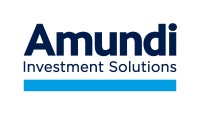Equity Markets and Earnings Outlook
Stop the Ride, I Want to Get Off!
Equity markets have had a torrid start to 2022, with the tech-heavy Nasdaq Composite falling by 13% in April, bringing losses to 21% for the year-to-date – its worst start to a year since the index was introduced in 1971. The S&P 500 hasn't fared much better, with its worst start to a year since 1939. Investors have been unsettled by rising bond yields, as the Fed and other central banks attempt to put the inflation genie back in the bottle by front-loading interest rate rises. The Fed has just decided on a 50-basis point rise, and may repeat the dose at upcoming meetings over the summer, while the Bank of England was more circumspect, with a 25bps hike. Hopes of an early resolution to the Ukraine crisis have faltered, with recent rhetoric becoming even more bellicose. China's zero-tolerance policy toward outbreaks of Covid-19, which has seen swathes of the country in lockdown, contributes to fears about impending global slowdown and further supply chain issues.

Pathways: The post-Covid-19 recovery in global air travel (Macquarie AM, 2022)
Macquarie Asset Management examines the global air travel industry, the knock-on effects of the pandemic, and how powerful and sustained the recovery might be.
Taking Stock of the Energy Shock (BlackRock, Mar 2022)
For compliance reasons, this paper is only accessible in the United States and Canada
BlackRock believes the drive for energy security will increase inflation and hurt growth in the short term. Greater supply of U.S. and other non-Russian fossil fuels will be needed. Further out, this should reinforce the net-zero transition in Europe yet make its pace more divergent across the world.
S&P 500 Earnings Scorecard (Refinitiv, Apr 2022)
The S&P 500 Earnings Scorecard combines the benefits of the Institutional Brokers' Estimate System's (I/B/E/S) historical earnings database with insights from S&P’s own Proprietary Research group to offer one of the most comprehensive earnings growth resources covering the companies in the S&P 500.
STOXX 600 Earnings Outlook (Refinitiv, Apr 2022)
Refinitiv provides a comprehensive guide to the STOXX 600 corporate earnings season, outlining the most important sectors to watch and a calendar of key corporate earnings.
Commodity Boom Gives Value the Edge in Q1 Maelstrom (FTSE Russell, Apr 2022)
For compliance reasons, this paper is only accessible in certain geographies
FTSE Russell dissects market returns by factor style, noting the resurgence in Value comes largely from the major regional Value indices holding significant weights in Energy and being underweight Technology.
Japan: Value stocks versus value stocks (Man Group, Apr 2022)
Man Group cautions against just buying Japanese stocks that exhibit the Value factor, choosing instead to focus on those companies with better balance sheets, stronger earnings, and a commitment to good corporate governance.
S&P Kensho New Economies Commentary: Q1 2022 (S&P Dow Jones Indices)
S&P Dow Jones Indices highlights the best and worst performing stocks and sectors in their Kensho New Economy indices, designed to track the industries and innovation of the Fourth Industrial Revolution.
Volatility Amplifies Themes in Industrials (Janus Henderson Investors, Apr 2022)
For compliance reasons, this paper is only accessible in the United States and Canada
Research Analyst and Assistant Portfolio Manager David Cheung briefly outlines how the industrial manufacturing sector is placed to cope with its latest challenge, the Russia/Ukraine crisis. He anticipates an upturn in industrial automation as a potential counter to post-Covid-19 labour shortages and wage demands.
Economic and Market Review: Considerations for investors (Neuberger Berman, Apr 2022)
For compliance reasons, this paper is only accessible in certain geographies
Neuberger Berman cautions that the Ukraine conflict may be less critical for equity markets than the anticipated slowdown in the economic growth cycle. They suggest positioning in Value over Growth, lower beta, large cap quality names and prefer U.S. markets over non-U.S. developed and emerging markets.




